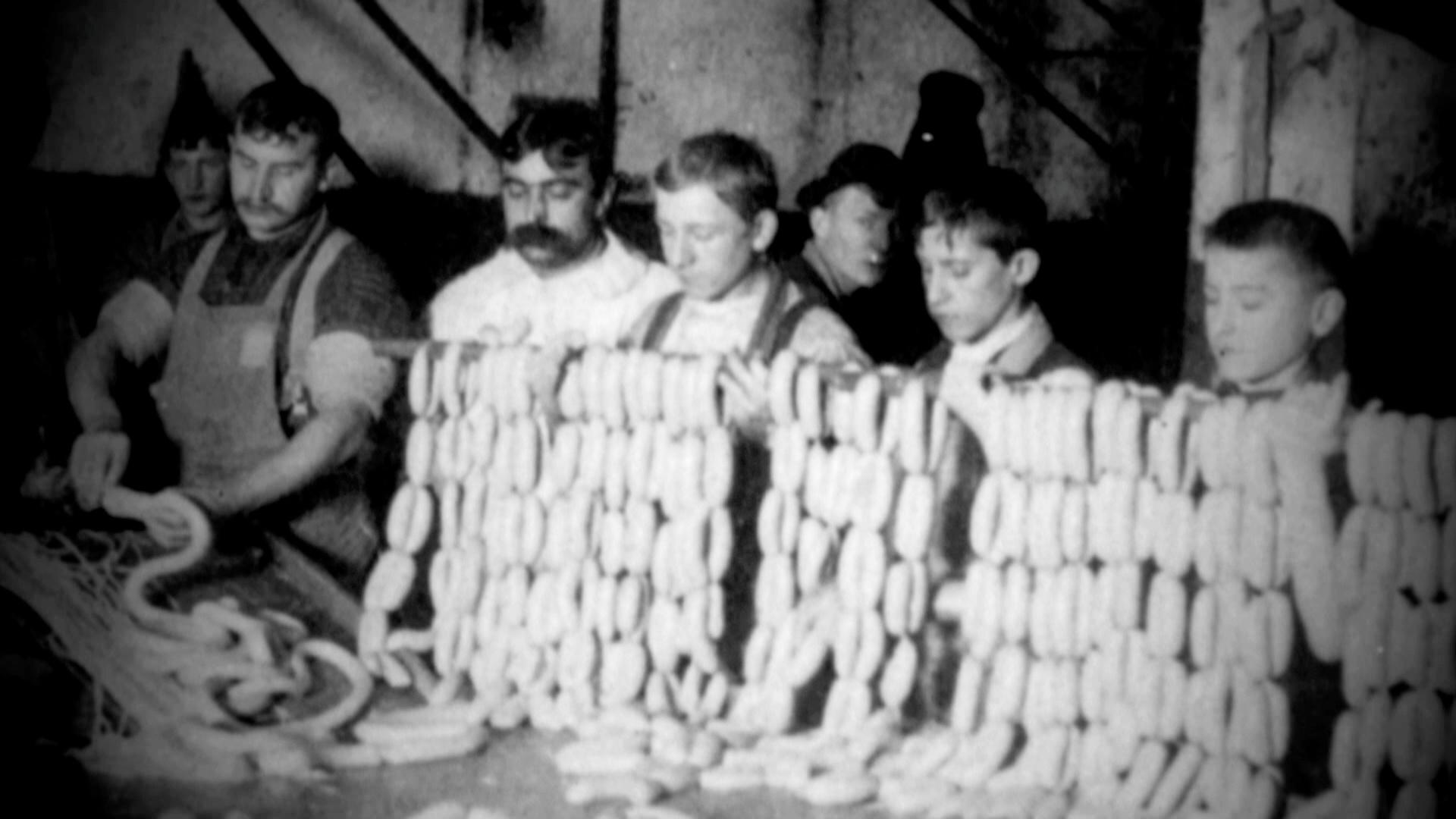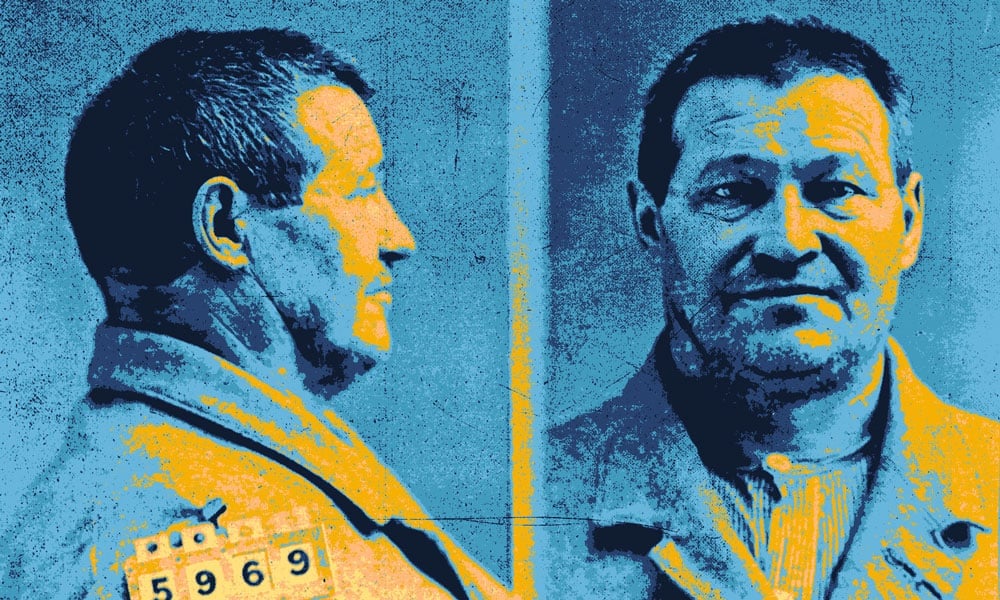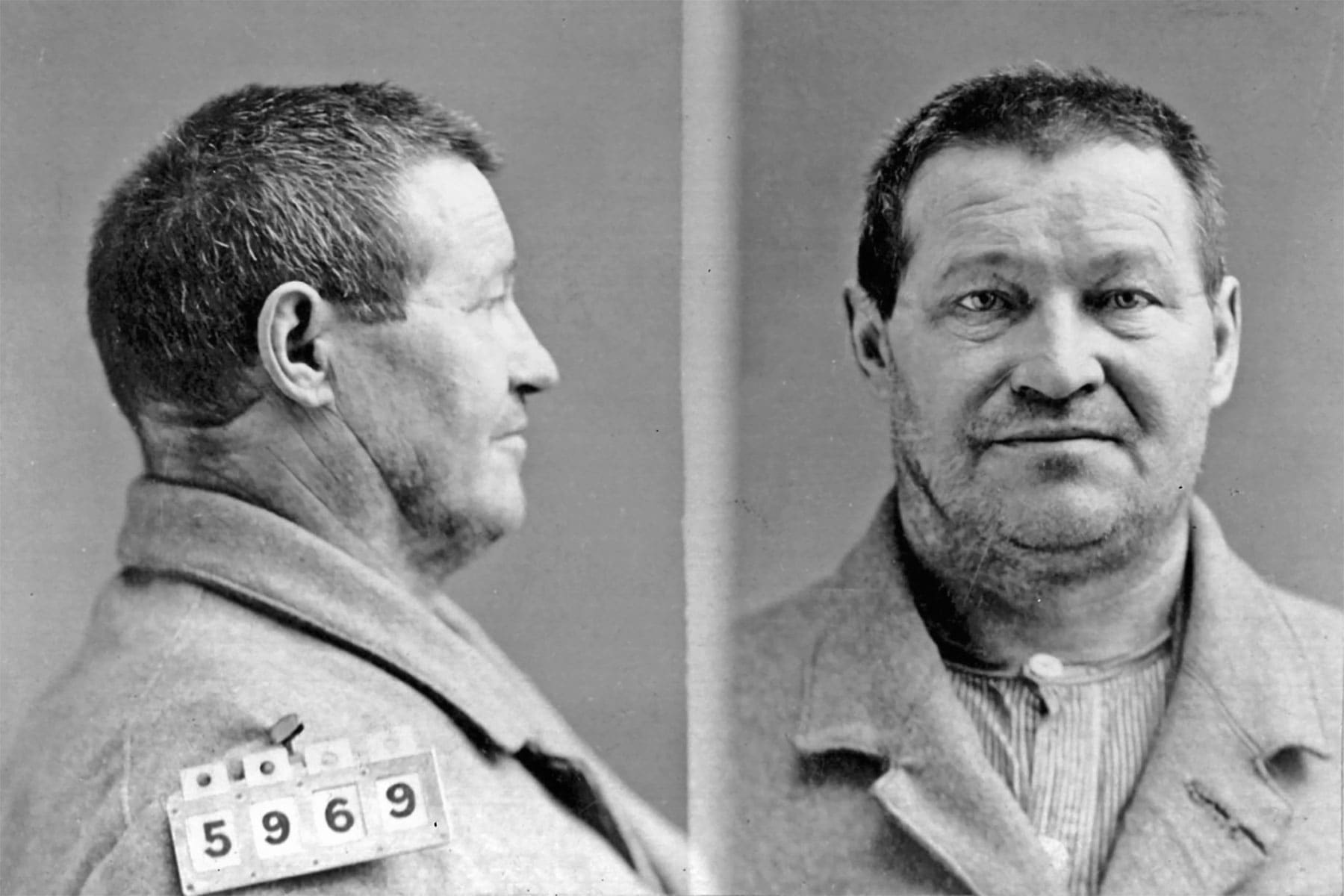The Mystery:
Did Chicago’s “Sausage King” really murder his wife?


The “Sausage King” of Chicago once used the vats in his factory for an unsavory crime. Geoffrey Baer tells the story of the murder and visits the basement where it supposedly took place.
In 1897, Adolph Luetgert – a German immigrant whose successful factory earned him the nickname “Chicago’s Sausage King” – was having a tough time at work and at home. His business had declined, his sausage factory was shuttered, and he and his wife, Louisa, were arguing a lot. “Luetgert was also allegedly having some affairs at the time,” Robert Loerzel, an author and historian who wrote an exhaustively researched book about Luetgert, told Geoffrey Baer. One night, Luetgert was working around a large vat in his factory, which was located right next door to his family’s home. The next morning, Louisa was gone, and Luetgert lied to his children and said she went to visit her sister. But Louisa’s siblings noticed she was missing, and Luetgert never called the police and reported it. “Luetgert doesn't seem too concerned about it. But finally the police come and started investigating, and they find a couple of Adolph Luetgert’s workers, who start telling them all these strange things about what was happening here in the basement,” Loerzel said. The workers informed police that Luetgert had purchased some kind of acidic substance he had warned would burn their fingers. He repeatedly sent away his night watchman the night he was working late, and he also had instructed his workers to clean the vat the following day. When authorities searched the vat in the factory, they found small pieces of human bone, some kind of slime, and two gold rings, one of which had “LL” engraved into it (Remember: the suspected victim’s name was Louisa Luetgert). Police charged Luetgert with the murder of his wife, and the rumor mill churned out a horrifying urban legend that Luetgert had turned Louisa into sausage. (There was no evidence of that.) His murder trial was a media sensation, so much so that Chicago Daily Journal reporters went so far as to eavesdrop on the jury. “They tied one reporter to a chair, lowered him by a rope down the heating shaft of the courthouse so that he was right outside the vents of the room where the jury was deliberating,” Loerzel said. While a hung jury prevented his conviction in his first trial, a second trial found Luetgert guilty, and he lived out the rest of his days in Joliet Prison. Following Louisa’s murder, there were reports from police and neighbors that her ghost, taking the form of a glowing orb, haunted the old factory. “I’m not sure if I believe in ghosts or hauntings, but I’m always interested in a case like this to find something that’s more like a firsthand account of it,” Loerzel said. “We’ve got a couple of neighbors and a couple of police officers who say they saw it so that it kind of lends some credence to the idea that there was at least something going on that seemed to be a haunting or a ghost.”



